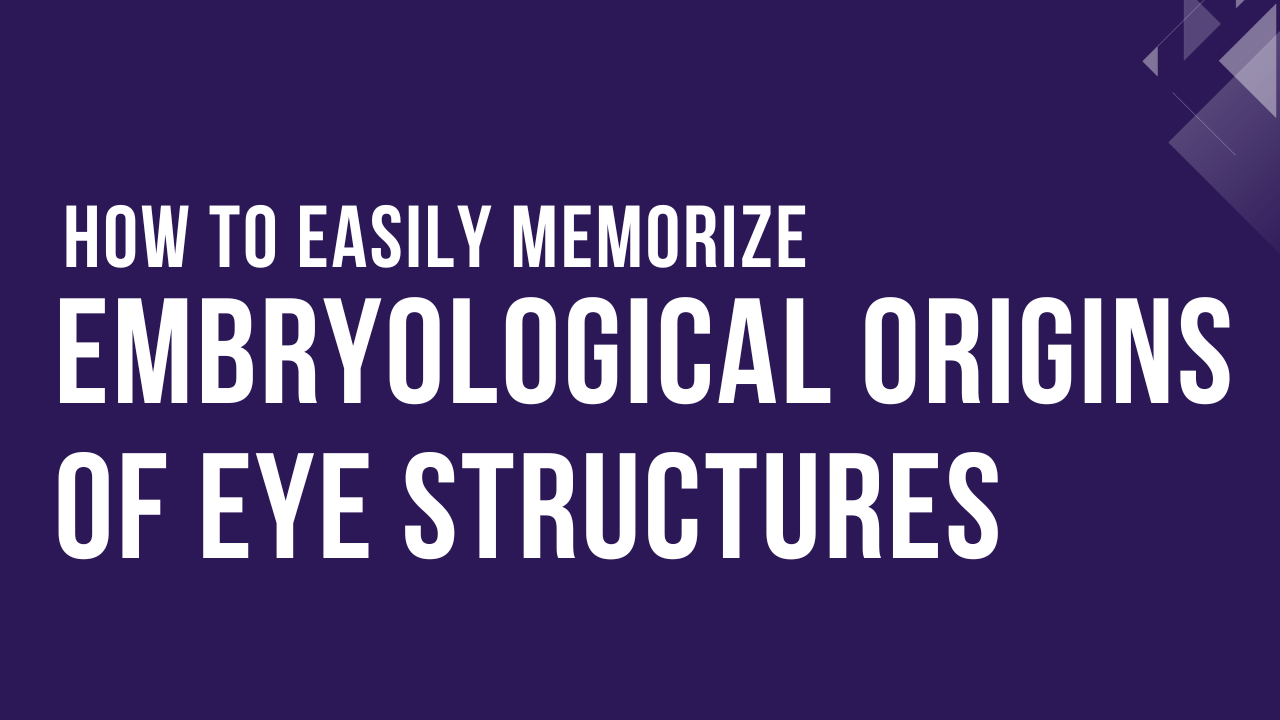Struggling to memorize the embryological origins of eye structures?
You’re not alone—ocular development involves multiple germ layers, and keeping track of them all can feel overwhelming. But here’s a practical approach: rather than brute-force memorizing every detail, start by learning the exceptions. Once you know the few structures derived from mesoderm and surface ectoderm, the rest can be logically deduced as neural crest or neuroectoderm. This article will walk you through a high-efficiency strategy to master ocular embryology with confidence and clarity.
How to Remember the Embryological Origins of Ocular Structures
When trying to memorize which embryonic layer each ocular structure comes from, here’s a useful tip:
Since neural crest (a subtype of mesenchyme) gives rise to a large number of ocular tissues, it’s actually more efficient to memorize all the other origins first, and then assume that the remaining structures are neural crest-derived. This “process of elimination” strategy is cost-effective!
Mesoderm-Derived Structures
Only a few structures originate from the mesoderm, so let’s start with these as they’re easy to memorize:
- Extraocular muscles
- Vascular endothelium
That’s it! Just memorize these two right away.
Surface Ectoderm
The next easiest to remember is the surface ectoderm, which contributes to tissues that are exposed to the outside world.
Structures such as:
- Eyelids
- Eyelashes
- Lacrimal drainage system
These all interface with the external environment.
Also, glands that secrete to the outside (like Zeis glands, Moll glands, and the lacrimal gland) are derived from surface ectoderm.
Other examples include:
- Corneal epithelium
- Conjunctival epithelium (including goblet cells, which are gland-like)
However, tissues beneath the conjunctiva—such as subconjunctival connective tissue, pigment cells, and sclera—are not exposed to the surface and therefore come from the neural crest.
This logic helps: if the tissue interacts with the outside world, it’s likely surface ectoderm.
An exception to this rule is the lens, which is still surface ectoderm-derived—but once you understand how the lens develops, this will make sense.
Neuroectoderm
Think of neuroectoderm as the origin of all neural structures in the eye.
Examples include:
- Retina (entirely neural, so naturally neuroectoderm)
- Optic nerve fibers
- Glial cells
Some structures like the iris and ciliary body are trickier, as they are composed of both epithelial and stromal layers with different embryonic origins.
The epithelial layers of the ciliary body and iris are derived from the neuroectoderm, specifically as extensions of the retina:
- Sensory retina becomes the non-pigmented ciliary epithelium
- Retinal pigment epithelium (RPE) becomes the pigmented ciliary epithelium
- Together, they form the bilayered iris epithelium
The iris muscles—the sphincter pupillae and dilator pupillae—also originate from the iris epithelium, and thus are neuroectoderm-derived as well.
Since the pupil responds to sympathetic input (dilation), it makes intuitive sense that these muscles are “neural” in origin.
Neural Crest
Now that you’ve covered the other layers, you can simply assume the rest are neural crest-derived—and this rule will help you correctly answer most embryology-related questions in ophthalmology!






